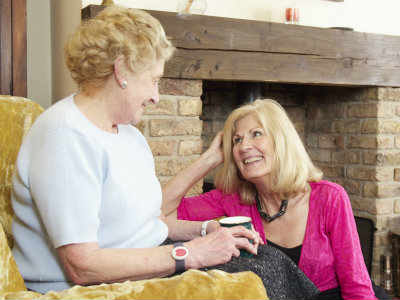
Telecare has long been heralded as the future for helping keep patients out of hospital, now the London Borough of Havering is providing the proof.
In 2013, the council commissioned an independent evaluation to look at the effectiveness of their On Track telecare initiative. Over an 18 month period, the scheme had reduced hospital admissions by 50% among participating service user groups and delayed residential or nursing care admissions by between two and seven months.
Speaking ahead of the National Children’s and Adults Services Conference, where she will be presenting a session, Joy Hollister, group director for children’s, adults and housing services at Havering Council, spoke to Community Care about the success of telecare in the borough.
A success story
“Just this week we had a lifeline call that actually saved someone’s life. The service user had pressed her lifeline but we couldn’t get a response from her. We sent round one of our staff members and he found the house on fire. He was beaten back by the smoke but he didn’t give up. He fetched two builders from across the road and they forced their way in and lifted her out. What a hero hey?” – Joy Hollister, group director for children’s, adults and housing services at Havering Council.
Q. What were the main aims of the scheme?
A. We have a hospital in special measures in Havering and we also have the biggest failure of A&E four hour targets in the country, so the Clinical Commissioning Group and our health colleagues were keen that we look at a range of initiatives to prevent hospital admissions. We had three main criteria for the On Track initiative: to prevent admissions to hospital, to delay or prevent admissions to residential and nursing care and to improve the quality of life for service users and their carers.
Q. Tell us more about the evaluation…
A. The findings were pretty astonishing really. We took two cohorts – cohort A had homecare and assisted living technology in place and cohort B just had homecare – and we looked at the difference between the admission rate of those two groups. In group B, admissions to hospital increased by 16% but for the service users with telecare we achieved a 9% decrease in admissions. This contributed to the overall 50% reduction of hospital admissions in the borough.
Q. What has been the main outcomes of telecare for service users?
A. Our evaluation found 95% of service users felt safer in their own homes as a result of using assisted technology. We’ve also evaluated our wristwatch technology, which uses a GPS system to track people with dementia who wander. This has had amazing results for carers – people feel they can leave the person with dementia alone for periods of time and get out and about shopping.
Q. What about the implications for social work practice?
A. One of the biggest things we’ve found with assisted technology is that we’ve had to win the hearts and minds of the staff who are doing assessments. If you can’t convince the social workers and the carers that this is a good idea then people aren’t going to use it. We found that the evaluation report encouraged more social care staff to recommend telecare as a way of keeping people at home.
Q. What would be your advice for other local authorities looking at setting up a telecare service?
You’ve got to know what you want to achieve in terms of outcomes and you’ve got to be able to evaluate against those outcomes. I would stress that those outcomes need to be as much about quality of life as cost avoidance. Focus on the carers as well as the person using it and don’t just look at social care, look at how you win the hearts and minds of GPs and the wider nursing network. Stick to the faith and really just believe in it.
Q. Finally, what’s been the key to success?
People. The technology allows the alert to happen but actually if your responders don’t respond in a timely and effective way then people lose faith in the equipment. Technology and equipment on its own is not the end of the story. It has to be backed up with really excellent staff who are customer focused, quick responders and who are well trained.


 Family help: one local authority’s experience of the model
Family help: one local authority’s experience of the model  ‘I spent the first three months listening’: how supportive leadership can transform children’s services
‘I spent the first three months listening’: how supportive leadership can transform children’s services  How senior leaders in one authority maintain a culture of excellence
How senior leaders in one authority maintain a culture of excellence  How staff support ensures fantastic outcomes for children and families
How staff support ensures fantastic outcomes for children and families  Workforce Insights – showcasing a selection of the sector’s top recruiters
Workforce Insights – showcasing a selection of the sector’s top recruiters 

 Facebook
Facebook X
X LinkedIn
LinkedIn Instagram
Instagram
Comments are closed.